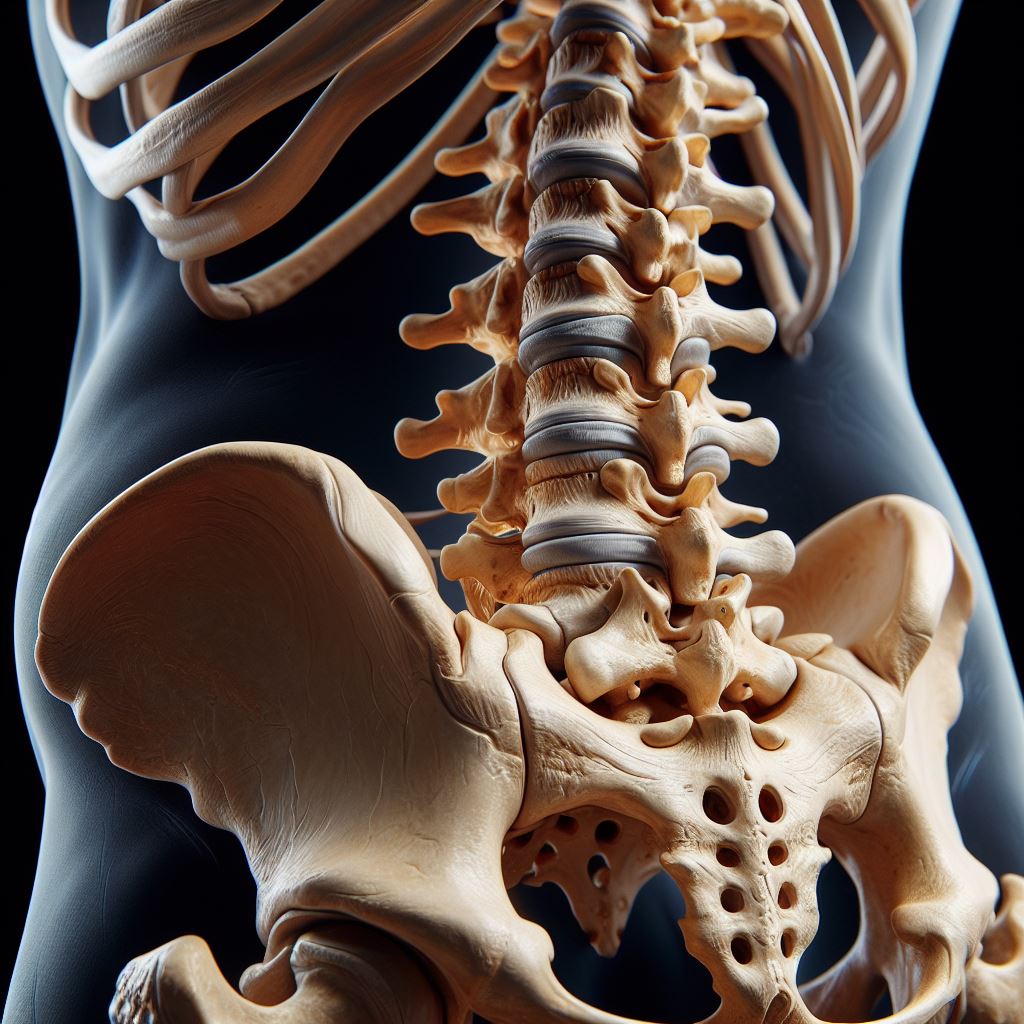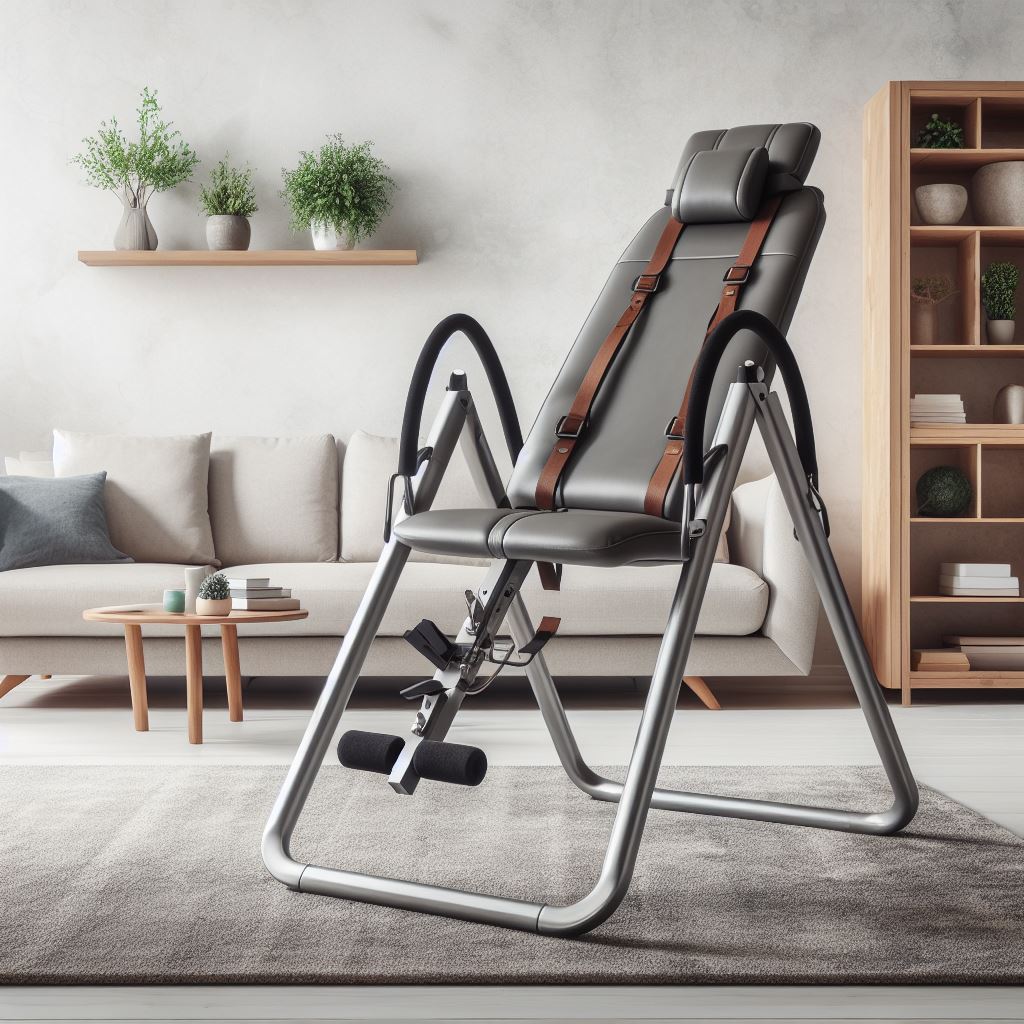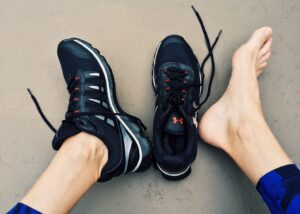Inversion tables offer a groundbreaking approach to back pain relief, harnessing the power of gravity to alleviate spinal pressure. By inverting the body, these innovative tables allow the spine to stretch and decompress, reducing the compression on discs and nerves that often contributes to back pain. This simple yet effective method not only provides immediate relief from discomfort but also contributes to long-term spinal health, making inversion tables a sought-after solution for those battling chronic back issues. Join us as we explore how inversion tables work, their benefits, and why they might be the key to unlocking a more comfortable, pain-free life.
Table of Contents
The Science Behind Inversion Therapy
Inversion therapy, a method where individuals are suspended upside down, aims to provide back pain relief through spinal decompression. This approach, increasingly popular among those seeking non-surgical treatments, hinges on the concept of reducing gravitational pressure on the nerve roots and spinal discs. But how exactly does it work? Let’s dive into the science behind inversion therapy to understand its role in alleviating back pain.
Gravitational Impact on the Spine
Normally, gravity puts pressure on our spine throughout the day, whether we’re sitting, standing, or walking. This pressure can compress the vertebrae, leading to issues like chronic back pain, herniated discs, and nerve pain. Inversion therapy, by flipping the body upside down, reverses this gravitational pull.
Spinal Decompression
When you’re inverted, the spine elongates due to the reversal of gravity, creating space between the vertebrae. This decompression is the key to the therapy’s effectiveness. It allows for a reduction in back pain, especially in cases of sciatica or herniated discs, by reducing the pressure on nerves and discs.

Increased Blood Flow
Another significant aspect of inversion therapy is the increased blood flow to the upper body and brain. This enhanced circulation can lead to improved brain function and can also expedite the healing process for spinal injuries by ensuring better nutrient and oxygen delivery.
Potential Risks and Precautions
While inversion therapy can be beneficial, it’s not suitable for everyone. People with high blood pressure, heart disease, or glaucoma should avoid it, as the increased blood flow can pose risks. Always consult with a healthcare professional before starting inversion therapy.
History and Evolution of Inversion Tables
The history of inversion tables is as intriguing as the device itself. Inversion therapy, the practice of hanging upside down to apply gentle traction to the spine, has been around for centuries, but the modern inversion table has evolved significantly from its ancient counterparts.
Ancient Beginnings
The earliest recorded use of inversion therapy dates back to 400 BC, with Hippocrates, the father of medicine, using a ladder and ropes to suspend patients upside down to relieve back pain and pressure on the spine. This rudimentary method laid the foundation for what would eventually become the inversion table.
Development in the 20th Century
The concept of the inversion table as we know it today began to take shape in the 1960s. Dr. Robert Martin, a California chiropractor, introduced the “Gravity Guidance System,” a series of exercises and equipment, including an early form of the inversion table. This invention was pivotal in bringing the concept of inversion therapy into mainstream awareness.
Technological Advancements
In the late 20th and early 21st centuries, inversion tables underwent significant improvements. Advances in materials and engineering led to more user-friendly, safe, and effective designs. Modern inversion tables come with various features like adjustable clamps, padded backrests, and easy-to-use inversion angle adjustment systems. These enhancements have made inversion tables more accessible and popular among those seeking relief from back pain, improved circulation, and increased flexibility.
Inversion Tables Today
Today’s inversion tables are the result of years of research, development, and user feedback. They are widely used in homes and therapy centers for spinal decompression, with many users reporting significant relief from back pain. The design continues to evolve, with a focus on improving safety features, comfort, and effectiveness.
The Future of Inversion Tables
As we look to the future, the inversion table continues to be a subject of interest in both medical and fitness communities. Ongoing research and technological advancements promise even more innovative designs, potentially making inversion therapy more effective and accessible to a broader range of people.
Types of Inversion Tables
When exploring the world of inversion tables, it becomes evident that there are several types designed to cater to different needs and preferences. Understanding these variations is crucial in selecting the right inversion table for your specific requirements.
Standard Inversion Tables
Standard inversion tables are the most common type found in many homes and gyms. They typically feature a basic frame, a padded backrest, and ankle supports. These tables allow users to invert at various angles, providing relief for back pain and improving spinal health. While they are less expensive, they offer limited features compared to more advanced models.
Foldable Inversion Tables
For those with limited space, foldable inversion tables are a great option. These models can be easily folded and stored away when not in use, making them ideal for small apartments or multi-use spaces. They usually have similar features to standard tables but are designed with portability and storage in mind.
Motorized Inversion Tables
Motorized inversion tables represent the high-end spectrum of inversion therapy devices. They offer automated control over the inversion angle and duration, making them suitable for individuals who prefer a more controlled and comfortable inversion experience. These are often used in therapeutic settings and are perfect for those who may need extra assistance due to mobility issues.
Inversion Chairs
Inversion chairs are a variation of the traditional inversion table. They are designed for those who may find it challenging to use standard tables. The chair design allows for easier mounting and dismounting, and it provides a more gradual inversion process. This type is particularly beneficial for older adults or those with severe back pain.
Advanced Feature Inversion Tables
Some inversion tables come with advanced features like heat and massage options, longer handles for easier return to an upright position, or improved ankle securing systems. These features enhance the inversion experience by providing additional comfort and therapeutic benefits.
Choosing the Right Type
Selecting the right type of inversion table depends on your individual needs, space availability, budget, and specific health concerns. It’s essential to research and possibly consult with a healthcare professional before making a decision.
Key Features to Consider
When shopping for an inversion table, it’s essential to know the key features that can make a significant difference in your experience and safety. Here are the most important aspects to consider:
Weight Capacity and Build Quality
The weight capacity of an inversion table is a crucial factor. It’s important to choose a table that can comfortably and safely support your weight. Alongside this, the build quality, including the frame’s material and construction, dictates the table’s durability and stability. Look for heavy-duty steel frames for maximum stability.
Comfort and Backrest Material
Comfort is paramount, especially when you’re hanging upside down. A good inversion table should have a comfortable backrest, ideally padded with memory foam or a similarly comfortable material. The thickness and type of padding can greatly influence the comfort level.
Ankle Support and Locking System
Ankle support is another essential feature. It should be secure yet comfortable, as inadequate ankle support can lead to discomfort or even injury. Look for tables with adjustable ankle clamps or ergonomically designed ankle cushions. The locking mechanism should be easy to operate, reliable, and safe.
Inversion Angle Adjustment
The ability to adjust the inversion angle is important, especially for beginners. Some inversion tables offer preset angles, while others allow for more granular control. This feature is crucial for gradually increasing your inversion angle over time as you become more accustomed to the therapy.
Ease of Assembly and Storage
Consider how easy it is to assemble the inversion table and whether it can be easily stored when not in use. Some models are foldable, which is a significant advantage if you have limited space.
Safety Features
Safety features, such as secure locks, anti-pinch hinges, and stability bases, are vital. Ensure that the inversion table has been tested for safety and meets relevant standards.
Additional Features
Some inversion tables come with extra features like lumbar support pads, acupressure nodes, or even heating elements for added therapeutic benefits. While not essential, these features can enhance your inversion therapy experience.
Safety and Precautions
Using an inversion table involves inverting your body, which can be beneficial for spinal decompression and back pain relief. However, it’s crucial to prioritize safety and take the necessary precautions. Here are key safety tips and precautions to keep in mind:
Consult a Healthcare Professional
Before starting inversion therapy, it’s advisable to consult with a healthcare professional, especially if you have pre-existing health conditions such as hypertension, heart disease, or eye problems like glaucoma. Inversion therapy can exacerbate certain health issues, so it’s important to get clearance from a doctor.
Start Slowly
If you’re new to using inversion tables, start with a mild inversion angle (around 15-30 degrees) and gradually increase it over time. This approach helps your body acclimatize to the new position and reduces the risk of dizziness or discomfort.
Proper Assembly and Use
Ensure that your inversion table is properly assembled and secured before each use. Follow the manufacturer’s instructions for setup and use. Regularly check all parts, bolts, and straps for any signs of wear and tear or damage.
Secure Ankle Locking
Make sure that the ankle locking system is securely fastened before inverting. The ankles should feel comfortably snug but not overly tight, to avoid undue pressure.
Use in a Spacious Area
Set up your inversion table in a spacious area, free from any obstructions. This space is necessary to ensure a safe range of motion while inverting.
Don’t Overdo It
Limit your inversion sessions, especially in the beginning. A few minutes per session is sufficient. Over time, you can gradually increase the duration as your body becomes accustomed to the inversion.
Supervision for Beginners
If you are new to inversion therapy, consider having someone supervise your first few sessions. This precaution can help in case you need assistance or feel discomfort during inversion.
Emergency Release Mechanism
Familiarize yourself with the emergency release mechanism of your inversion table. Knowing how to quickly return to an upright position is crucial for safety.
Monitor Your Body’s Response
Pay attention to how your body reacts during and after inversion. If you experience severe dizziness, shortness of breath, or discomfort, return to an upright position and discontinue use until you consult with a healthcare professional.
Comparative Analysis of Popular Brands
When it comes to choosing an inversion table, the brand can make a significant difference in terms of quality, features, and overall value. Here’s a comparative analysis of some popular brands in the market, helping you make an informed decision.
Teeter Inversion Tables
Teeter is one of the most well-known brands in the inversion table market. Renowned for their high-quality build and innovative design, Teeter inversion tables often feature advanced locking systems, acupressure nodes, and lumbar support. They are typically more expensive but are known for their durability and exceptional comfort.
HARISON Inversion Tables
The HARISON Inversion Table is known for its sturdy construction and high weight capacity, featuring a robust steel frame and comfortable padding for secure and comfortable inversion therapy. It offers adjustable inversion angles and is designed with user safety and ease of use in mind, making it a reliable choice for those seeking back pain relief and spinal decompression.
Innova Inversion Tables
Innova is another reputable brand, known for offering inversion tables with innovative features at a more affordable price point. Their tables often include unique features like adjustable headrests and multiple inversion angles, catering to a variety of user needs.
Exerpeutic Inversion Tables
Exerpeutic offers inversion tables that are both affordable and reliable. While they may not have all the advanced features of higher-end models, they provide good stability and basic functionality, making them a great choice for those on a budget.
Health Gear Inversion Tables
Health Gear is known for its combination of affordability and quality. Their inversion tables often come with additional features like heat and massage options, which are not commonly found in tables at similar price points.
Comparing Features and Price
When comparing these brands, it’s important to balance features with price. Higher-priced models often offer advanced features and better build quality, while more affordable options may be sufficient for basic inversion therapy needs.
Price Range and Value for Money
When considering the purchase of an inversion table, understanding the price range and assessing value for money is crucial. Inversion tables come in a variety of price brackets, each offering different features and levels of quality.
Entry-Level Inversion Tables
Entry-level inversion tables are typically priced between $100 to $200. These models are basic, providing the fundamental features needed for inversion therapy without the frills of higher-end models. They are ideal for first-time users or those who plan to use them occasionally. However, they may have limitations in terms of build quality, weight capacity, and comfort features.
Mid-Range Inversion Tables
Mid-range inversion tables, priced between $200 to $400, offer a balance between affordability and advanced features. These models often come with better build quality, improved safety features, and additional comfort options like padded backrests and adjustable ankle supports. They are suitable for regular use and offer better durability compared to entry-level models.
High-End Inversion Tables
High-end inversion tables are priced from $400 and above. These premium models are designed with the best materials and come with a plethora of features like heat and massage options, improved ergonomics, and advanced safety mechanisms. They are built for durability and comfort, making them ideal for frequent use or therapeutic settings.
Assessing Value for Money
When assessing value for money, consider how often you plan to use the inversion table and for what purpose. If you are looking for a table for occasional use and basic back pain relief, an entry-level or mid-range model might suffice. However, if you need an inversion table for regular therapeutic use or have specific health conditions, investing in a high-end model might be more cost-effective in the long run.
It’s important to remember that the most expensive inversion table isn’t always the best choice for everyone. Match your specific needs and budget with the features offered by the table to get the best value for your money.
Ease of Use and Assembly
When selecting an inversion table, ease of use and assembly are critical factors to consider. A user-friendly inversion table not only enhances your experience but also ensures safe operation. Here’s a breakdown of what to look for in terms of ease of use and assembly:
Assembly Requirements
Most inversion tables come partially assembled, but some assembly is usually required. The ease of assembly can vary significantly between different models and brands. Look for an inversion table that comes with clear, step-by-step instructions and all the necessary tools for assembly. Some higher-end models may offer tool-free assembly, which can be a significant time-saver.
User-Friendly Design
The design of the inversion table should facilitate easy operation. Features such as reachable adjustment controls, easy-to-use ankle locking systems, and clearly marked angle settings contribute to overall ease of use. The less complicated the operation, the more likely you are to use the table regularly.
Adjustability
Adjustability is a key aspect of ease of use. An inversion table that easily adjusts to different heights and inversion angles can accommodate various users and comfort levels. This flexibility is especially important if multiple people will be using the table.
Portability and Storage
Consider whether the inversion table can be easily moved and stored. Some models are foldable, which is beneficial if you have limited space. Additionally, look for models with transportation wheels if you plan to move the table frequently.
Weight and Handling
The weight of the inversion table affects both its stability and portability. A heavier table may offer more stability but can be difficult to move. Conversely, a lighter table is easier to handle but may not feel as secure during use.
Safety and Comfort Features
Lastly, consider safety and comfort features that make the use of an inversion table easier and more enjoyable. These can include padded backrests, foam rollers for ankle support, and easy grip handles for a smoother inversion and return.
Conclusion: Inversion Tables – A Turning Point in Back Pain Relief
As we conclude our exploration of inversion tables, it’s evident that these remarkable devices offer a significant turning point in the management and relief of back pain. This journey through the history, types, and key features of inversion tables underscores their value not just as a therapeutic tool but as a beacon of hope for those burdened by back discomfort.
The versatility of inversion tables, ranging from basic models for occasional use to advanced options with therapeutic features, allows individuals to find a solution tailored to their specific back pain needs. The principle of spinal decompression, central to the functionality of these tables, provides a non-invasive, drug-free method to alleviate spinal pressure, reduce nerve irritation, and improve overall spinal health.
Safety and ease of use emerge as paramount considerations, highlighting the importance of choosing the right inversion table and using it correctly. Regular maintenance and care extend the lifespan of these tables, ensuring they remain a safe and effective part of your health regimen.




